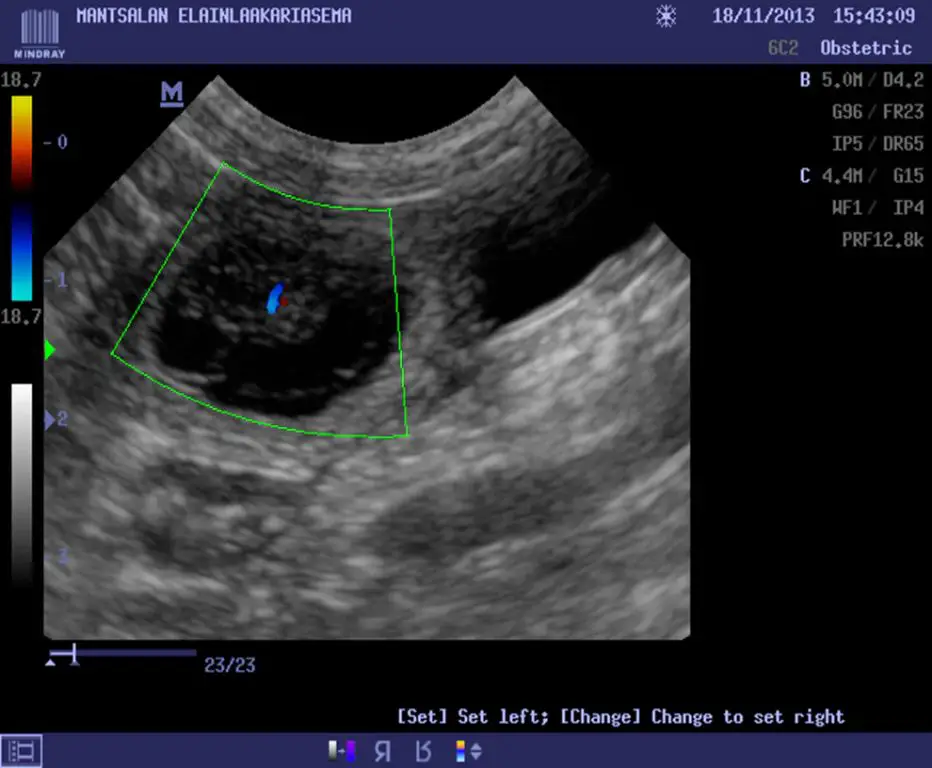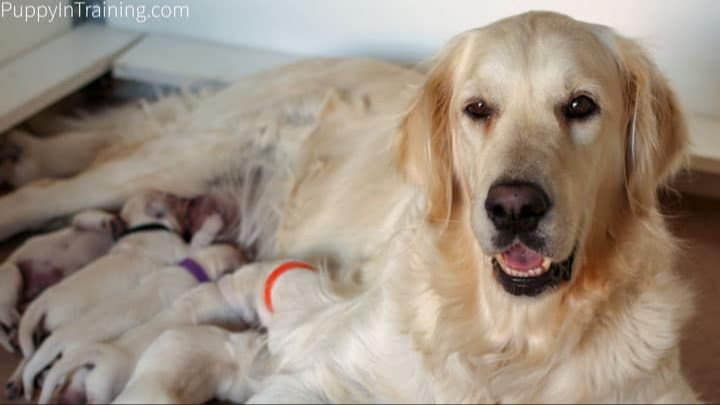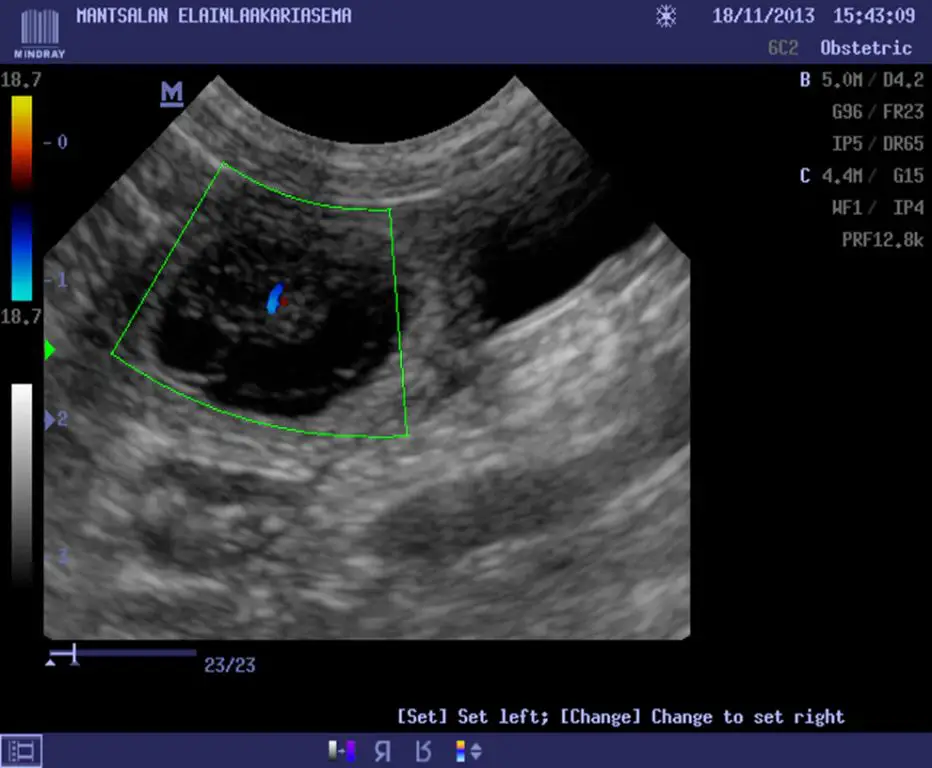Introduction
A dog pregnancy scan is an ultrasound examination to check on puppies in the womb. Scans allow a veterinarian to monitor the health and development of puppies and detect any potential issues early on. They are an important part of prenatal care for expecting canine mothers.
There are several reasons why pregnancy scans are recommended for dogs (cite: https://belly-labs.com/blogs/science/canine-ultrasound-scanning-for-pregnancy-determination-what-you-should-know):
- Confirm pregnancy and determine how many puppies are expected
- Check for any abnormalities in the puppies or uterus
- Assess the size and developmental progress of the litter
- Monitor the mother’s health and prepare for any risks
- Detect pregnancy complications like resorption or fetal death
Scans allow breeders and veterinarians to properly prepare for the arrival of a litter. By scanning regularly throughout pregnancy, they can stay updated on the condition of both mother and offspring. This helps set up the best care plan leading up to delivery.
When Scans Are Performed
The earliest a dog pregnancy scan can typically be performed is around 3 weeks from the date of breeding or mating. However, the most reliable scans tend to occur from 4-5 weeks and beyond. According to the Animal Ultrasound Association, the earliest a mobile pregnancy scan should be booked is around 30 days or 4 weeks gestation.
Canine Scanning notes that a trained clinician can confirm pregnancy in dogs from as early as 21 days or 3 weeks since mating occurred https://caninescanning.co.uk/faq/when-can-you-scan-a-dog-for-pregnancy/. However, scans at this very early stage can sometimes miss evidence of pregnancy.
Most vets recommend scheduling an initial scan between 4-5 weeks from the breeding date to get the clearest results. This allows time for the embryos to develop to a size that can be clearly visualized on ultrasound.
What Is Seen on a 5 Week Scan

At 5 weeks gestation, some key developments can be observed on an ultrasound scan of a pregnant dog:
The puppies will appear as small fluid-filled sacs, though their features are not yet distinguishable. The number of sacs gives an estimate of litter size at this early stage. According to Embassylakes Hospital, the fetal poles can be seen as early as 25 days into gestation.
Cardiac activity may be detectable in some of the fetuses, appearing as faint flickering movements. Per Animal Ultrasound Association, heartbeats are not reliably detected until closer to 6 weeks.
The puppies’ amniotic sacs and placentas may be observed attached to the uterine wall. The embryos will be very small at this point.
Abnormalities like resorption of fetuses or smaller than expected litter size may also be identified at 5 weeks. However, it is still early for definite confirmation.
The pregnant dog’s uterus will have enlarged in preparation for the growing litter. Increased blood flow to the uterus is visible on Doppler imaging.
While more will be observable after 6-7 weeks, the main purpose of a 5 week scan is to confirm pregnancy and estimate litter size. Structures like spinal cords are not yet developed enough to see clearly.
Sources:
Detecting Heartbeats
One of the key things the veterinarian will look for during a pregnancy scan at 5 weeks is detecting the puppies’ heartbeats. According to VIN, fetal heartbeats may be seen as early as 23-24 days into the pregnancy, but they can be difficult to detect until around day 25 [1]. Belly Labs notes that heartbeats can typically be heard around 21 days into gestation [2].
Detecting those early fetal heartbeats is a clear sign that pregnancy is progressing normally. The scan will allow the vet to listen for distinct rhythmic beating from each puppy. If heartbeats are present for all fetuses, it indicates they are growing well. Any abnormalities like missing heartbeats could signify potential problems that require monitoring.
Around 5 weeks or 35 days into the pregnancy, the heartbeats should be clearly audible on the ultrasound. Listening to those steady heart rhythms can provide reassurance that the puppies are thriving at this stage.
Determining Litter Size
An ultrasound scan at 5 weeks can provide an estimate of the number of puppies in the litter. The developing puppies will appear as fluid-filled sacs, allowing the vet to count them and determine litter size. However, accuracy increases later in pregnancy as the skeletons ossify. Per the Merck Veterinary Manual, late gestational radiography (>55 days) is the best method to determine litter size, as fetal dentition becomes visible at term [1]. At 5 weeks, litter size predictions may be less precise.

According to a study by Lenard et al., prediction accuracy for litter size at 4-5 weeks was 75.9% [2]. The number of fetuses observed did not always match the number of puppies born. This is likely because some puppies are obscured by others on the scan. Nonetheless, the 5 week scan provides a valuable estimate to help the owner prepare for whelping.
Checking Health of Puppies
An ultrasound scan at 5 weeks into a dog’s pregnancy can provide important information about the health and development of the puppies.
One of the main goals of a 5 week pregnancy scan is to check for fetal heartbeats and measure heart rates, which indicate puppy viability and well-being. According to Belly Labs, a normal fetal heart rate at this stage is 170-220 beats per minute.1 Slow or irregular heartbeats may signify potential health problems.
The scan gives the veterinarian a view of the puppies’ fetal structures. At 5 weeks gestation, organs like the stomach and kidneys should be visible and properly formed.Checking that organs are developing on schedule is an important part of assessing puppy health and catching any abnormalities early.
The number of puppies and their relative sizes can also be determined during the 5 week scan. Tracking growth from this point on is key to ensuring the puppies are growing at a normal rate and no issues like stunted development arise. Identifying these kinds of problems early means steps can be taken to protect puppy health.
While not definitive, observing strong heartbeats, normal organ development, and appropriate growth at this stage are all encouraging signs that the puppies are healthy and thriving.
Checking Health of Mother
A 5 week pregnancy scan is useful for assessing the health and well-being of the mother dog. The scan allows the veterinarian to visualize the uterus and look for any abnormalities or causes for concern. Some things the vet will look for include:
Proper fetal positioning – Ideally the puppies should be spaced out in the uterus and not clustered together, which can indicate a problem. The vet will check that the fetuses look normal and are developing as expected.
Uterine size – The vet will measure the uterus and expect to see significant growth and swelling at this stage. Lack of growth may indicate an issue with the pregnancy.
Fluid levels – The amniotic fluid cushions and protects the growing puppies. Too much or too little fluid can signify trouble.
Placental attachments – The vet will verify the placentas are properly attached and supplying nutrients to the fetuses. Detachments are dangerous.
Signs of infection – The vet will look for any abnormalities in the uterine tissue or discoloration that could point to infection.
Heart rate monitoring – The vet will check the mother’s heart rate for any signs of distress or complications.
By thoroughly evaluating the health of both the mother dog and her puppies, vets can diagnose and treat any issues to help ensure the pregnancy proceeds safely. Monitoring at 5 weeks enables early interventions if problems arise.
As noted in one source, “Ultrasound scans are non-invasive and harmless to the bitch and puppies, making [them] one of the best methods for monitoring dog pregnancies.” (Source)
Looking for Abnormalities
During the 5 week scan, the veterinarian will look closely for any potential abnormalities or issues that could complicate the pregnancy or health of the puppies. Some things they may look for include:
Uterine cysts – Fluid filled cysts on the uterus can sometimes form during pregnancy. While usually harmless, larger cysts may warrant monitoring or intervention (Canine Ultrasound Scanning for Pregnancy Determination).
Abnormalities of the uterus – Things like uterine inertia, torsion, rupture, or infection can negatively impact pregnancy outcomes. Scans allow vets to assess the health and position of the uterus (Pregnancy diagnosis and abnormalities of pregnancy in dogs).
Placental abnormalities – The scan may detect potential issues with placental attachments or development that could restrict nourishment to the fetuses.
Fetal positioning – Abnormal positioning like transverse orientation of fetuses may indicate a higher risk pregnancy.
Infections – Some bacterial or viral infections can cross the placenta and impact the health of puppies. Scans allow vets to be on alert for signs of trouble.
By thoroughly evaluating the uterus and puppies, vets can diagnose and monitor pregnancy complications early on when treatment is most effective.
Preparing for Delivery
The 5 week pregnancy scan is very useful for beginning preparations for the upcoming delivery. By this point in the pregnancy, the vet can get an estimate of the litter size based on the number of heartbeats detected. This allows the owner to prepare the appropriate number of whelping boxes and supplies needed.

The scan also checks the health and position of the puppies. If any appear to be in an abnormal position, such as breech, the owner can consult the vet on how to correct this before labor begins. Additionally, the scan gives the vet an idea of the due date so the owner knows when they need to be available and alert for the birth.
Some other ways a 5 week pregnancy scan aids preparations for delivery include:
- Allowing the owner to childproof the area and make it a safe zone for puppies.
- Letting the owner stock up on food, treats, toys, etc for the nursing mother and puppies.
- Helping the owner research information on whelping and raising a litter if this is their first time.
- Providing time to choose names and set up identification collars for the puppies.
Overall, the 5 week scan gives owners notice to get ready for the big event and helps set their expectations on the size of litter to care for. This early insight is invaluable for ensuring the delivery goes smoothly and the new puppies thrive under their owner’s diligent preparations.
Conclusion
In summary, a 5 week scan is an important tool for monitoring the health and development of a dog’s pregnancy. At this stage, heartbeats should be detectable, giving a strong indication that the puppies are growing as expected. Litter size can also be estimated to help the owner prepare accordingly. The scan allows veterinarians to check on the well-being of both the puppies and mother, watching for any abnormalities or complications. As delivery approaches, the owner can feel more prepared knowing the pregnancy has progressed smoothly. With the right care and preparation, the puppies have the best chance of being born happy and healthy.

Overall, a 5 week pregnancy scan provides vital information and reassurance for dog owners. Detecting heartbeats and issues early on gives vets the opportunity to intervene if needed. While not considered mandatory, an ultrasound at this point in gestation can give dog owners valuable peace of mind. Knowing the litter size and that puppies are developing normally allows plenty of time to get ready for the big day. For a smooth pregnancy and delivery, a scan at 5 weeks can make all the difference.